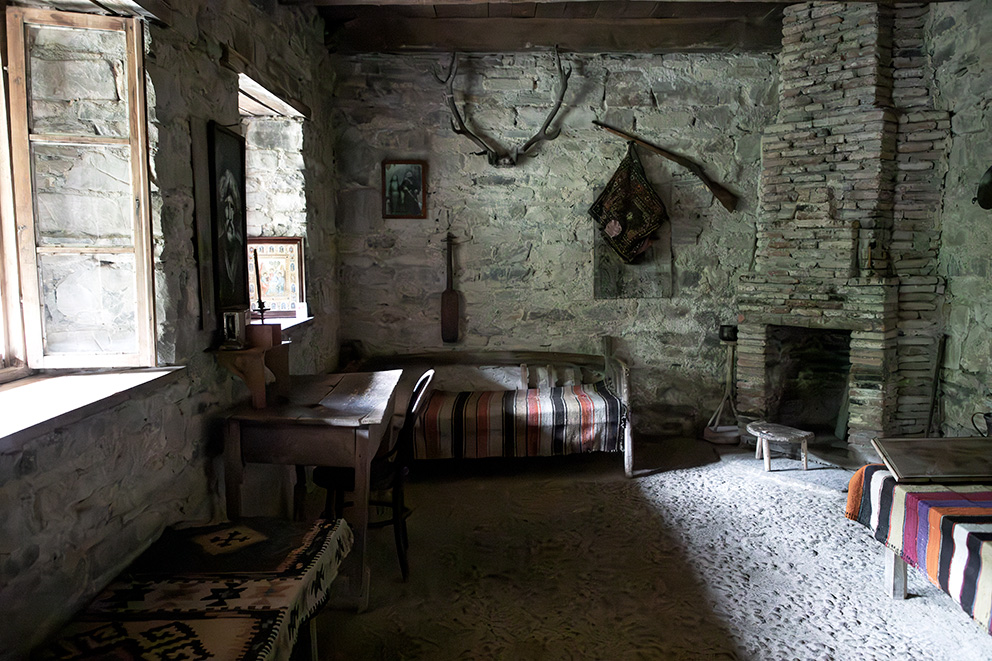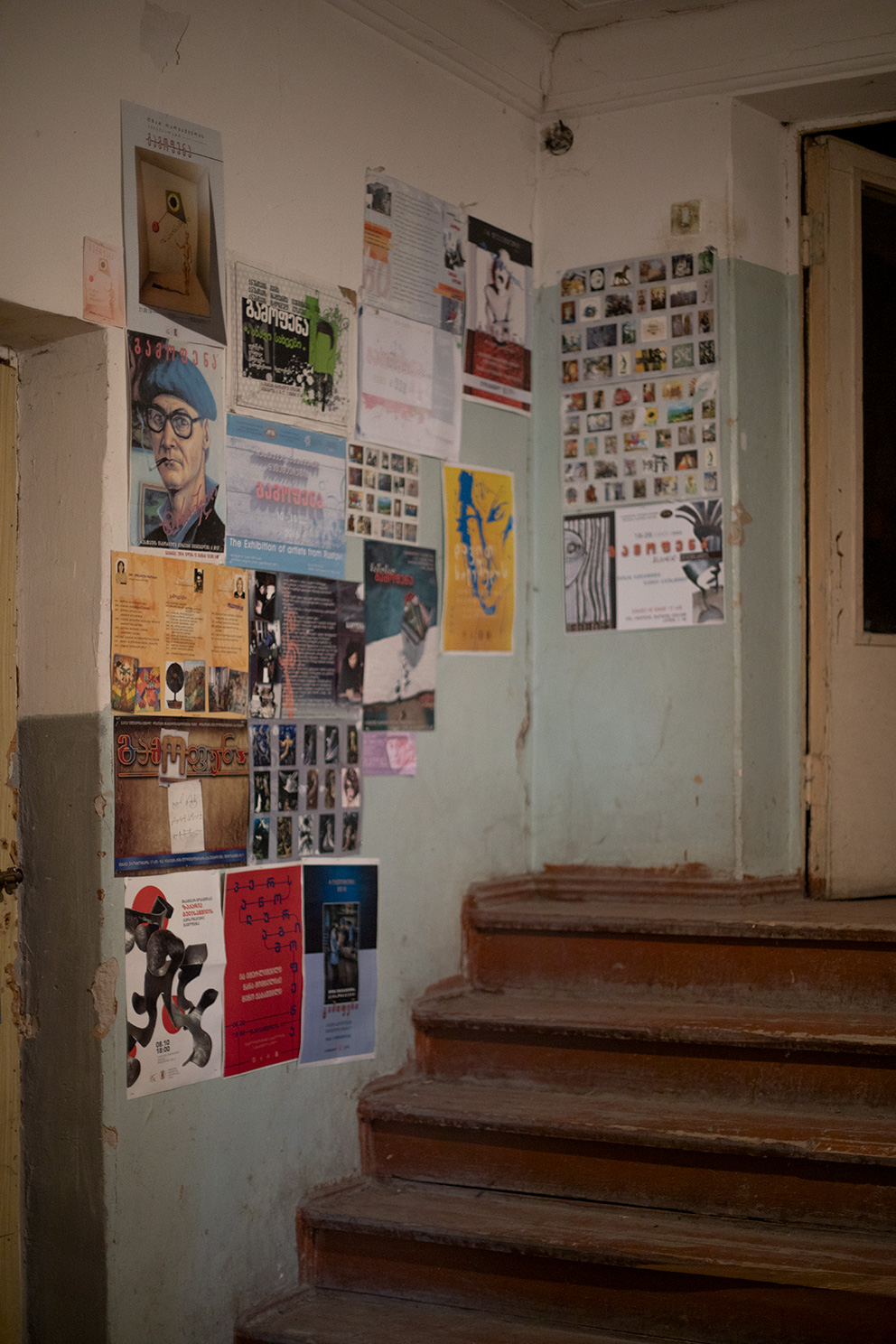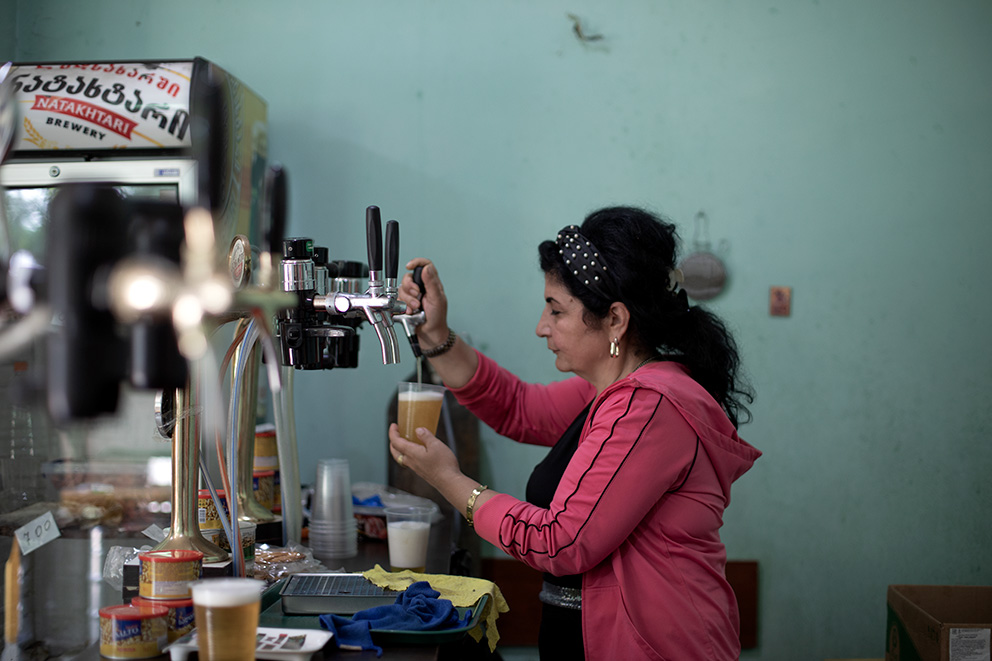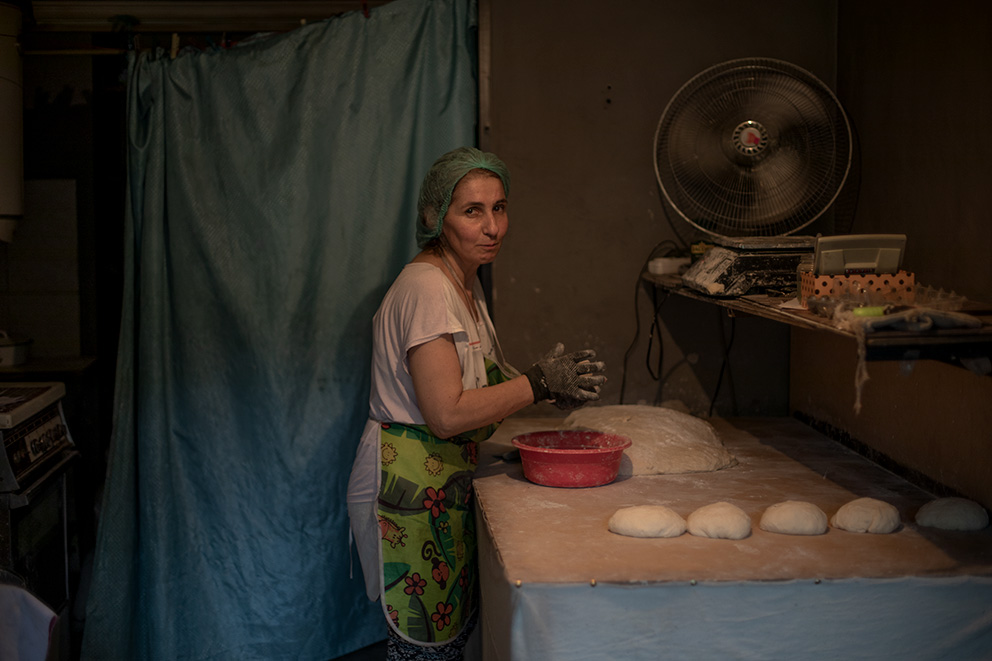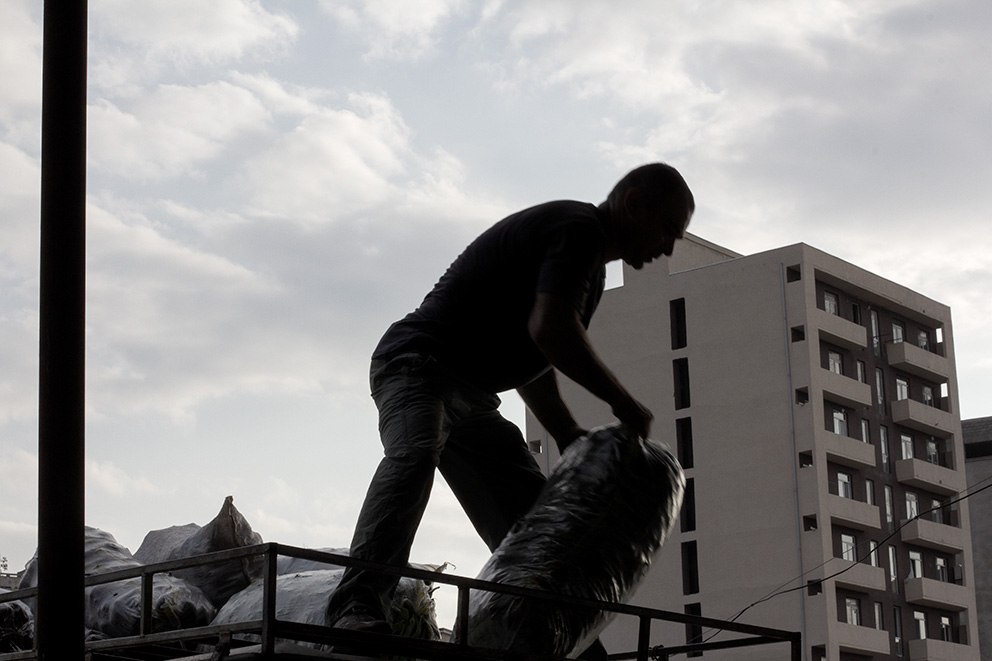Picturesque Georgia
Six selected photographs from an ongoing series. The photographs were taken in several Georgian cities: Rustavi, Tbilisi, Chiatura, and Gori, in the summer and fall of 2015-2022, during research on various topics of interest.
Read More
The photographs depict individuals with whom fleeting, informal connections were made. These individuals experience a range of emotions, including excitement, fear, and embarrassment, as a result of these one-time, unexpected encounters.
The photographs, taken in the subjects’ natural living environments, reflect Georgia’s history and various practices, such as hospitality, traditional cooking, and simple customs and rituals. In Georgia’s ongoing pursuit of progress, these people, places, and practices are gradually fading into the background, becoming relics of a bygone era.
Several photographs evoke a painterly quality. This effect is achieved through the careful selection of subjects, framing, and lighting, which often resemble elements found in paintings. Additionally, the subtle play of light and shadow, as well as the varied photographic textures – ranging from bright and polished to rough and dim – contribute to this painterly aesthetic. A photograph that alludes to a painting underscores the layered nature of artistic creation. In this sense, photography serves as both a continuation of artistic tradition and a medium for innovation and development, both in terms of technique and artistic interpretation.
This form of photography traces the origins of painting, exploring the subjects, scenes, and real-world contexts that inspired artistic expression. By doing so, the artist’s interpretation reveals connections between art and reality. The older the art historical context of the images, the more likely they are to capture scenes in a less developed setting. Georgia, situated at the intersection of the first and third worlds, offers a wealth of visual and emotional material that supports and reinforces this type of observational approach.
